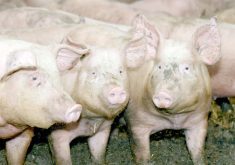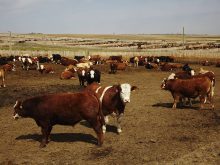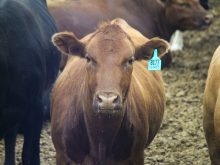DENVER, Colo. – Joe Greig was stunned and scared when his two small
children were sickened by an E. coli infection last month.
He thought he had taken all the necessary precautions on his 3,000 head
feedlot in Iowa.
Food was properly cooked. Pet cats never left the house. Manure-covered
boots and coveralls were left in the garage away from the children. The
family gets its water from a treated municipal supply.
Even after retracing his steps, no one can tell him how his
Read Also

Lending policy still focused on primary producers: Farm Credit Canada
Farm Credit Canada said it has not changed its business practices and remains committed to supporting all producers, after a report from an Ottawa-based media outlet claimed otherwise.
14-month-old son and four-year-old daughter became so ill so suddenly.
The two are nearly recovered and suffered no permanent effects.
“The good news for my kids is that they probably will be immune to it
now,” he said.
A pediatrician from South Dakota was able to help the Greig family
doctor quickly diagnose the bloody diarrhea and ordered the two into
hospital. They are still on antibiotics and must continue to submit
stool samples.
Greig came to the National Cattlemen’s Beef Association convention
hoping to find some answers.
What he heard unsettled him.
New and improved diagnostic tests show E. coli 0157:H7 is more
prevalent in cattle than previously thought.
A study of 900 beef calves in the U.S. Midwest found that 7.4 percent
of them were shedding the bacteria at fall weaning.
“At one point we thought the relative infection rate going on in the
cattle population was about one percent,” said Robert Elder of the U.S.
Department of Agriculture’s food and feed safety research division.
As well, of the 15 herds that ranged between 100 and 500 cows, 13
tested positive for E. coli. Further studies showed several strains of
the bacteria are appearing in herds.
Researchers know humans can get the disease from infected material as
small as a teardrop.
Considerable effort has been directed at reducing pathogens in
processing plants. Bacteria like E. coli do not harm cattle and when
they arrive for slaughter show no outward signs that they are carrying
a potentially fatal pathogen.
Although E. coli infections are called hamburger disease, the bacteria
can also show up in other food as well as the water supply.
Since most people do not come in contact with animal feces, researchers
decided to examine other parts of the animal, including the mouth,
feet, flanks, back, underbelly and neck. They found bacteria in all
these areas some of the time.
They even found the bacteria in a low percentage of carcasses in plants
that followed a hazard analysis critical control points program.
Meat recalls continue to occur, maybe because of cross contamination
when meat cuts are broken down in the processing area.
“How we deal with E. coli must change or the recalls will continue,”
Elder said.
Various forms of intervention have been considered when feeding cattle
before slaughter, but none have proved completely effective.
Elder’s research team did discover that cleaning animals prior to
slaughter with a solution of the mouthwash cepacol killed the bacteria.
“It seems to be a compound that leaves a residue that provides some
protection,” Elder said.















